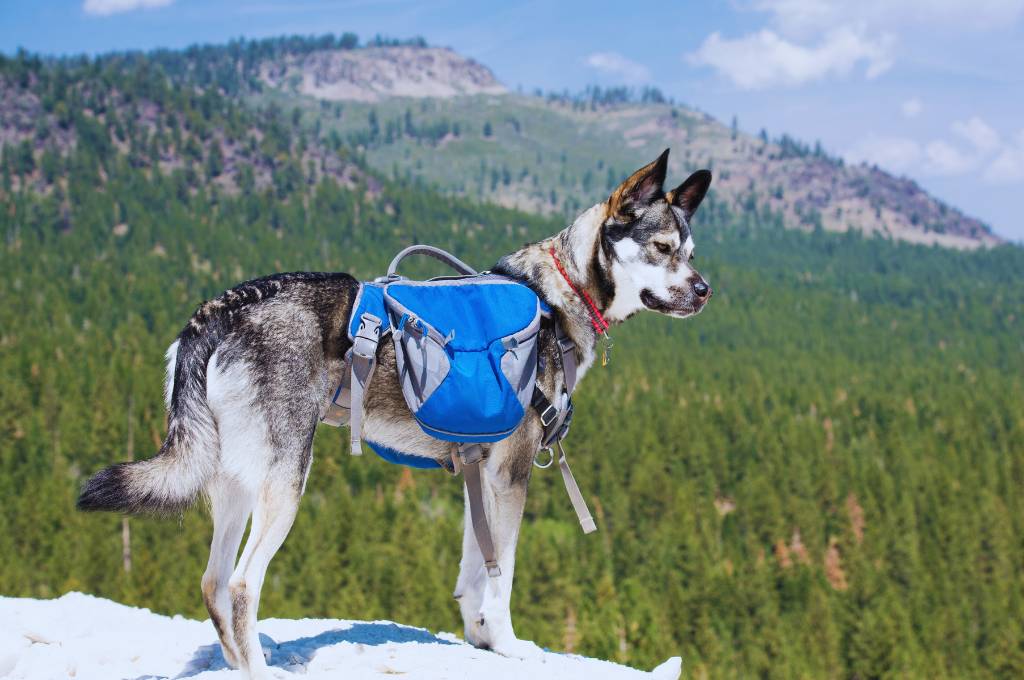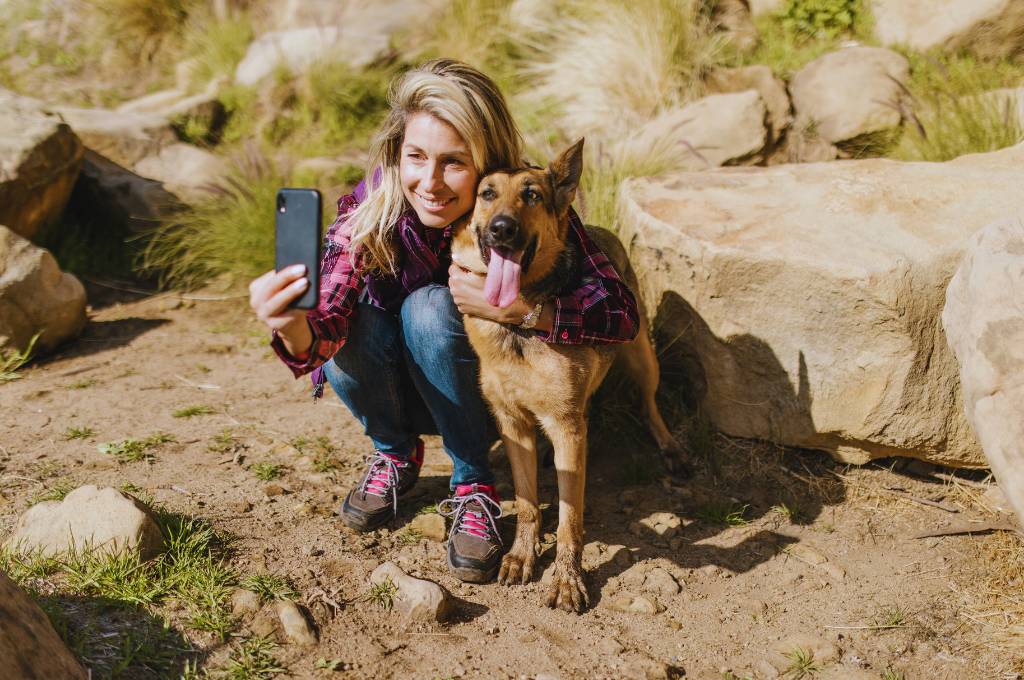In recent years, we’ve witnessed a delightful convergence of wanderlust and animal affection. The trend of backpacking with pets is on the rise as more pet owners are keen to share the joys of exploration with their furry companions.
This guide is crafted to aid you and your loyal sidekick in embarking on memorable outdoor adventures together. So, lace up your boots, strap on that leash, and let’s journey into the wild!
The Rising Trend of Backpacking with Pets
We live in an era where our pets are not just animals but family members—and increasingly, adventure buddies. The trend of backpacking with pets is cementing its spot in the outdoor community, and it’s easy to see why. Trail treks with pets don’t just mean more snuggles under the stars; they offer shared experiences that enhance the bond between you and your companion.
Benefits of Bringing Your Pet Along
Apart from companionship, bringing your pet on a backpacking trip encourages physical fitness for both of you, provides a security presence, and can even support your mental health. As our pets enthusiastically revel in the smells and sights, their zest for discovery is utterly infectious.
Table of Contents

Choosing the Right Pet
Suitability of Different Pets for Backpacking
Most dogs are naturally suited for outdoor activities, but some breeds handle the rigors of backpacking better than others. Likewise, adventurous cats and even birds can enjoy a well-planned outing. It’s essential to consider each pet’s temperament and ability to adapt to changing environments.
Size Considerations
The size of your pet can influence the type of gear needed and the distance they can comfortably travel. Larger dogs can handle longer treks, while smaller pets may need more frequent breaks or even a helping hand over rough terrain.
Health and Age Factors
Before embarking on a backpacking trip, ensure your pet is in good health and up to the challenge. Young, vibrant pets typically have more stamina, but senior pets can also enjoy gentler hikes if they are healthy and conditioned for the activity.
Essential Gear for Pet Backpacking
From durable leashes to collapsible dishes, investing in the right gear is essential for a safe and hassle-free backpacking adventure with your pet.
Pet-Specific Backpacks
Brands like Ruffwear and Outward Hound offer specialized backpacks designed for pets to carry their supplies. These backpacks distribute weight evenly and come in various sizes to fit pets comfortably.
Collars, Harnesses, and Leashes
A sturdy collar equipped with ID tags and a robust harness from brands like Kurgo facilitate control and safety. Opt for a leash that can withstand rough terrain and possibly one with a hands-free option.
Food and Water Containers
Portable and sealable food containers are a must to keep your pet’s food fresh. Collapsible water bowls or bottles designed by pet gear brands ensure your pet stays hydrated without adding unnecessary weight to your pack.
Training Your Pet for Backpacking
Basic Commands
Effective communication through basic commands like “stay,” “come,” and “leave it” is vital. Your pet should be responsive to your guidance, especially in potentially dangerous situations.
Exposure to Outdoor Environments
Gradually introduce your pet to the outdoor elements they’ll encounter on the trail. Acclimatizing them to different surfaces, water bodies, and the variety of sounds can reduce anxiety during the actual backpacking trip.
Gradual Conditioning Techniques
Condition your pet for longer hikes by starting with short walks and progressively increasing the distance. This builds stamina and helps you gauge their ability to handle the strain of backpacking.

Planning Pet-Friendly Routes
Researching Pet-Friendly Trails
Not all trails are open to pets, so research is key. Find destinations with accessible water sources, shade, and pet-friendly policies.
Understanding Trail Regulations
Familiarize yourself with trail regulations regarding pets. Some areas may require leashes at all times or restrict access during certain seasons to protect wildlife.
Considering Wildlife and Weather Conditions
Plan your route considering the likelihood of wildlife encounters and the weather forecast. Both can greatly affect the safety and comfort of your pet.
Health and Safety Measures
Veterinary Check-ups
Schedule a check-up with your vet before the trip. Ensure your pet is up-to-date on vaccinations, and consider preventive treatments for fleas, ticks, and other pests.
First Aid Kit for Pets
Create a pet-specific first aid kit. Items like bandages, antiseptic wipes, and tick-removal tools should be included. Familiarize yourself with basic pet first aid practices.
Recognizing Signs of Discomfort
Keep a close eye on your pet’s behavior and physical condition. Look out for signs of fatigue, overheating, or distress and act promptly if they occur.
Nutritional Considerations
Portable Pet Food Options
Pack lightweight, calorie-dense food for your pet. Consider the added energy requirements of a backpacking trip when planning meals.
Proper Feeding Schedule
Maintain a consistent feeding schedule to keep your pet’s energy levels stable. Breaks for snacks can help sustain them during longer treks.
Monitoring Hydration Levels
Water is just as vital for your pet as it is for you. Ensure constant access to fresh water and monitor your pet for signs of dehydration.
Sleeping Arrangements
Choosing Suitable Pet-Friendly Campsites
When it comes to camping, find spots that accommodate pets. Ensure the site is safe and comfortable for your pet to rest.
Portable Pet Beds and Sleeping Bags
Bring along a portable bed or a sleeping bag designed for pets from brands like Petzl to ensure your companion’s comfort during the night.
Creating a Comfortable Sleeping Space
Designate a specific area for your pet to sleep, preferably within your tent or under a shelter. This provides them a secure, cozy space to unwind after a day of adventure.

Socializing with Other Backpackers
Etiquette for Pet Owners
Practice good trail etiquette by keeping your pet under control, especially when encountering other backpackers. Respect others’ space and preferences regarding pets.
Introducing Pets to Strangers
Introduce your pet to strangers carefully and gradually. Monitor their reactions and give other backpackers guidance on interacting with your pet if necessary.
Handling Unforeseen Interactions
Be prepared for unplanned encounters with other animals or humans. Know how to de-escalate situations and protect both your pet and others from potential harm.
Leave No Trace Principles
Proper Waste Disposal for Pets
Carry bags for pet waste and dispose of it according to Leave No Trace principles. Leave the trail as pristine as you found it for others to enjoy.
Respecting Wildlife and Vegetation
Train your pet to observe wildlife from a distance and not to disturb plant life. This preserves the natural environment and keeps both the wildlife and your pet safe.
Minimizing Environmental Impact
Minimize your impact on the environment by sticking to designated trails and camping sites. Avoid taking shortcuts that could damage vegetation and wildlife habitats.

Capturing Memorable Moments
Tips for Photographing Pets in the Wilderness
Take advantage of natural lighting early in the morning or late in the afternoon for stunning pet portraits. Capture candid moments of your pet enjoying the wilderness to remember the experience.
Documenting the Backpacking Experience
Keep a journal or blog of your backpacking adventures with your pet. Notes, photos, and reflections can keep memories alive and help others learn from your experiences.
Creating a Pet Backpacking Journal
Encourage a sense of adventure by documenting trails explored, distances covered, and special moments shared. This can be a fun way to track your pet’s progress as an outdoor enthusiast.
Challenges and Solutions
Common Issues Faced by Pet Backpackers
Anticipate challenges like wildlife encounters, inclement weather, or injuries. Knowing your pet’s limits and having contingency plans is essential.
Problem-Solving Strategies
Develop strategies for keeping your pet calm during storms, handling injuries, or encountering aggressive animals. Staying calm and confident can help mitigate many issues.
Preparing for Unexpected Situations
Always pack extra supplies and know the fastest way back to civilization should an emergency arise. Your pet relies on you to navigate unexpected challenges safely.
Legal Considerations
Understanding Local Pet Regulations
Different regions have various regulations regarding pets. Research any specific permits or documentation needed and follow these guidelines to avoid fines and preserve access for future pet backpackers.
Permits and Documentation for Pet Backpacking
In some areas, permits are required for overnight stays or access to certain trails. Ensure all paperwork is in order before heading out.
Responsibly Navigating Public Lands
Understand your responsibilities when traversing public lands with a pet. This includes knowing the boundaries of where pets are permitted and adhering to all rules.
Evaluating Your Pet’s Enjoyment
Signs of a Happy Backpacking Pet
Observe your pet for signs of contentment, such as a wagging tail, keen interest in the surroundings, and an eagerness to continue exploring.
Adjusting Plans Based on Pet Comfort
Be flexible and willing to alter your plans based on your pet’s comfort and energy levels. Shortening a trip for their well-being is always the right decision.
Knowing When to End the Trip
Recognize when it’s time to call it a day, either due to fatigue, injury, or overwhelming conditions. The safety and happiness of your pet are paramount.
Conclusion
With proper planning, preparation, and a bit of flexibility, backpacking with your pet can be an incredibly rewarding experience. It allows you to bond with your furry companion while exploring the great outdoors. So pack up, leash up, and hit the trail together – adventure awaits!
Finish the journey with these ‘pawsome’ tips in mind, and remember to always prioritize your’s and your pet’s well-being and safety. So go ahead and plan your next backpacking trip with your beloved animal companion – they’ll thank you for it!
Keep exploring, keep adventuring, and most importantly, keep making memories with your furry companions.
Happy trails with tails!
Frequently Asked Questions (FAQs)
Is backpacking safe for all types of pets?
Not all pets are cut out for the rigors of backpacking. Consult with a vet to confirm it’s right for your pet’s breed, health, and temperament.
How can I train my pet for long hikes?
Start with short hikes and gradually increase the length. Train them to adhere to voice commands, carry a pack, and get comfortable with travel essentials.
What should I do if my pet gets injured on the trail?
Carry a pet first-aid kit and learn basic care procedures. In severe cases, head to the nearest vet clinic immediately.
How should I prepare my pet for backpacking?
Ensure your pet responds to basic commands, simulates backpacking activities at home, and acclimates them to their gear to prepare for the outdoor adventure.
What are the benefits of backpacking with pets?
Backpacking with pets enhances the bond between you and your companion, promotes physical fitness, provides a security presence, and supports mental health.
How should I handle encounters with other animals or humans while backpacking with my pet?
Always keep your pet on a leash and follow Leave No Trace principles when interacting with wildlife. Respect other people’s space and adhere to any designated areas for pets.
Do I need special gear for my pet on a backpacking trip?
Yes, some essential items include a properly fitting harness, collapsible food and water bowls, paw protection, and possibly a backpack designed for pets.



